Child may give clues to mysterious mountain people linked to Attila the Hun's ancestors.
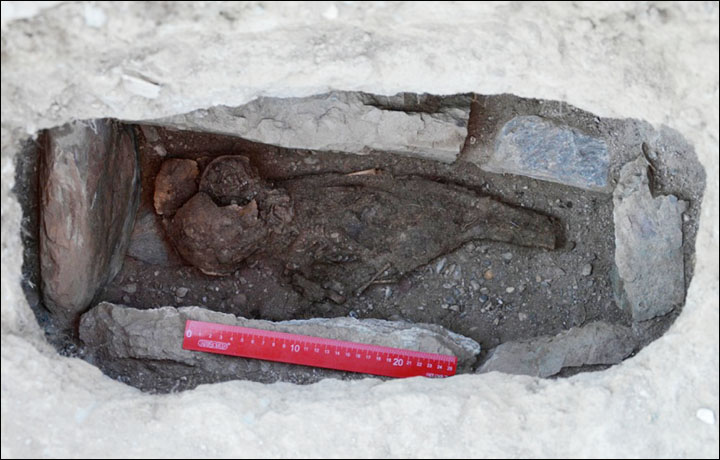
The baby was buried in tightly closed stone box, so the body was in an isolated air chamber for over 1,500 years. Picture: Gorno-Altaisk State University
The tragic infant's remains were unearthed in excavations near Kurai village in Kosh-Agach district of the Altai Republic in southern Siberia. The baby's remains were sealed in a tightly closed stone coffin, creating an isolated air chamber for over 1,500 years.
Unintentionally, this led to the child's remains being mummified. The tiny human remains swathed in leather were found between two other burial mounds, presumably those of the parents.
Archaeologist Dr Nikita Konstantinov, from Gorno-Altaisk State University, said: 'This was a baby, maybe one month old, possibly even newborn. The gender is unknown as yet.
'The child was buried in a separate small burial mound located between the mounds of two adults, probably the parents. (The baby) was buried in tightly closed stone box, so the body was in an isolated air chamber for over 1,500 years.
'This partially preserved the soft body tissue and fragments of a leather shroud, in which the baby was wrapped.' He added: 'Sadly the head was not preserved at all.'
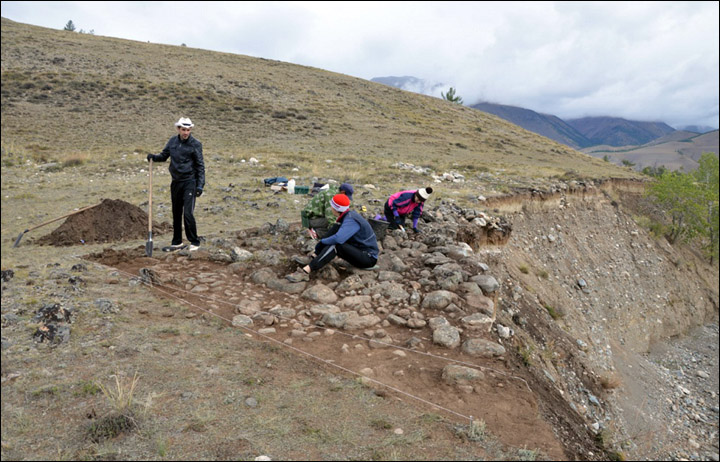
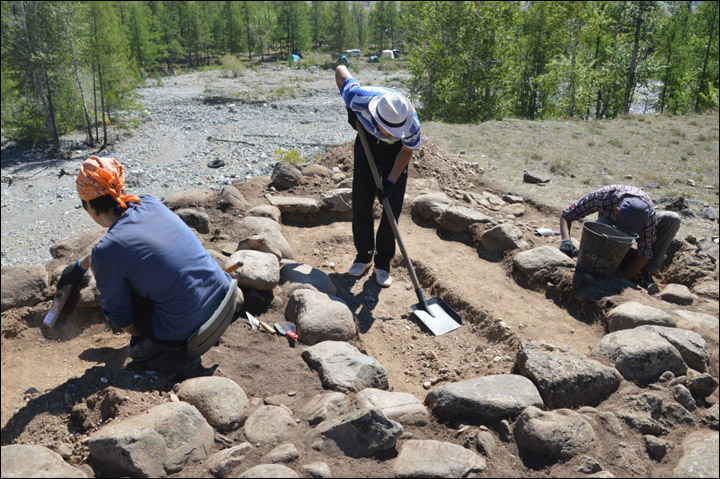
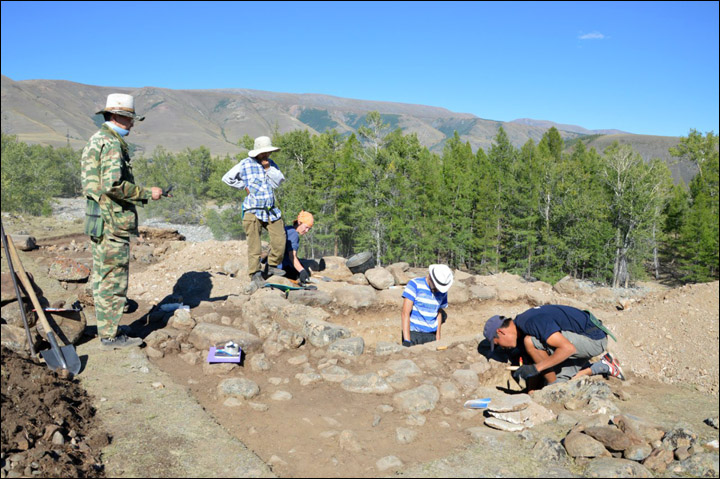
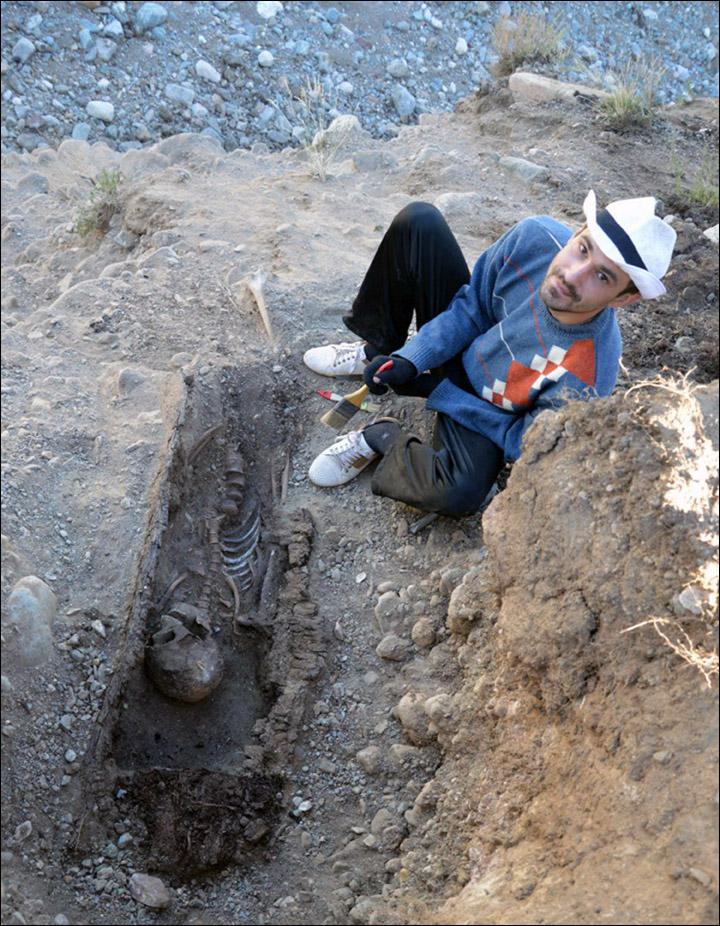
'The child was buried in a separate small burial mound located between the mounds of two adults, probably the parents. Pictures: Gorno-Altaisk State University
DNA analysis - likely to be in Denmark - is to be made of the remains, which could throw intriguing light on a people thought to be from the Bulan-Kobinskaya culture which had links to ancient Hun warriors.
'We know very little about this culture, but we see that it differs from the other cultures of this period,' he said of the Bulan-Kobinskaya grouping.
'We hope that DNA analysis will help us to understand who these people were - and which migration patterns were underway in Altai at that time.' Genetic analysis could determine 'from where these people came' and establish traces they left in the modern population.
'The mummified remains are kept now in the university,' he said. 'After research, we will probably pass them to the local museum in Kosh-Agach.'
Altai is famed for the preservation of ancient human remains. Conquering warlord Attila the Hun was born in modern-day Hungary and lived later centuries than this child, but his ancestors were from Eurasia.
No comments:
Post a Comment